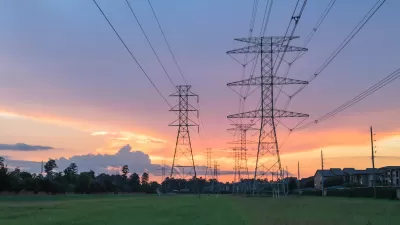Driven by student activism and less idealistic motivations for improving energy efficiency, college campuses across the Unites States are pioneering 'innovative approaches to rethinking energy infrastructure'.
"Over the past decade, colleges and universities across the country have become concerned about their environmental footprint, and today they are leading the way in developing innovative approaches to rethinking energy infrastructure," writes Sophie Quinton.
"In many cases, students have been the ones instigating these campus changes, pushing their administrators to make commitments to reduce fossil fuel emissions or to set a goal of becoming carbon neutral. For their part, schools are interested in finding energy savings and reaching greater efficiency. As climate change continues to alter energy needs and alternative fuel sources become more widely-accepted, towns and institutions may find themselves drawing lessons from the way college campuses are meeting their energy goals."
Quinton looks at three projects - the University of Iowa's biomass fuel project, the University of New Hampshire's Eco-Line, and the University of California, San Diego's campus microgrid - that demonstrate the types of cutting-edge technologies that may soon migrate to a town near you.
FULL STORY: Could You Run Your City on Oats?

Alabama: Trump Terminates Settlements for Black Communities Harmed By Raw Sewage
Trump deemed the landmark civil rights agreement “illegal DEI and environmental justice policy.”

Study: Maui’s Plan to Convert Vacation Rentals to Long-Term Housing Could Cause Nearly $1 Billion Economic Loss
The plan would reduce visitor accommodation by 25% resulting in 1,900 jobs lost.

Why Should We Subsidize Public Transportation?
Many public transit agencies face financial stress due to rising costs, declining fare revenue, and declining subsidies. Transit advocates must provide a strong business case for increasing public transit funding.

Paris Bike Boom Leads to Steep Drop in Air Pollution
The French city’s air quality has improved dramatically in the past 20 years, coinciding with a growth in cycling.

Why Housing Costs More to Build in California Than in Texas
Hard costs like labor and materials combined with ‘soft’ costs such as permitting make building in the San Francisco Bay Area almost three times as costly as in Texas cities.

San Diego County Sees a Rise in Urban Coyotes
San Diego County experiences a rise in urban coyotes, as sightings become prevalent throughout its urban neighbourhoods and surrounding areas.
Urban Design for Planners 1: Software Tools
This six-course series explores essential urban design concepts using open source software and equips planners with the tools they need to participate fully in the urban design process.
Planning for Universal Design
Learn the tools for implementing Universal Design in planning regulations.
Smith Gee Studio
Alamo Area Metropolitan Planning Organization
City of Santa Clarita
Institute for Housing and Urban Development Studies (IHS)
City of Grandview
Harvard GSD Executive Education
Toledo-Lucas County Plan Commissions
Salt Lake City
NYU Wagner Graduate School of Public Service



























